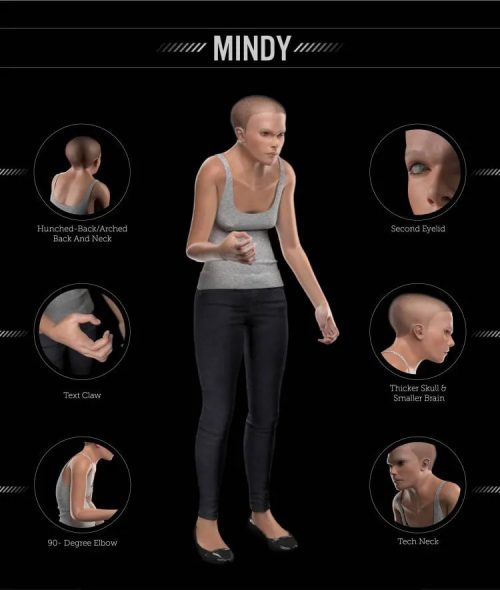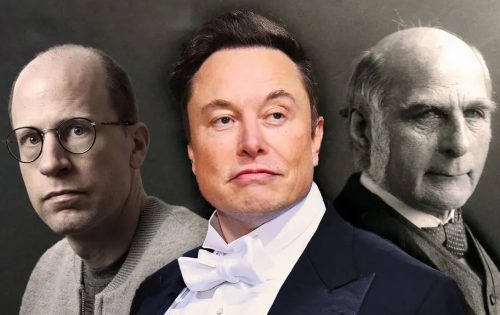More information has been released about how Neuralink is run. Hoo boy. As with Twitter, the problems with this company can be traced right back to the boob who owns the company. Let’s start with the nice bits.
In some ways, Neuralink treats animals quite well compared to other research facilities, employees said in interviews, echoing public statements by Musk and other executives. Company leaders have boasted internally of building a “Monkey Disneyland” in the company’s Austin, Texas facility where lab animals can roam, a former employee said. In the company’s early years, Musk told employees he wanted the monkeys at his San Francisco Bay Area operation to live in a “monkey Taj Mahal,” said a former employee who heard the comment. Another former employee recalled Musk saying he disliked using animals for research but wanted to make sure they were “the happiest animals” while alive.
That’s nice. We just have to picture a Disneyland with visitors in cages, subject to botched experimentation and death. Happiest place on Earth!
Then we get the raw numbers.
In all, the company has killed about 1,500 animals, including more than 280 sheep, pigs and monkeys, following experiments since 2018, according to records reviewed by Reuters and sources with direct knowledge of the company’s animal-testing operations. The sources characterized that figure as a rough estimate because the company does not keep precise records on the number of animals tested and killed. Neuralink has also conducted research using rats and mice.
Killing 1500 animals in and of itself is not horrible — any pharmaceutical company or stockyard is going to have bigger numbers than that. But that one comment, “the company does not keep precise records on the number of animals tested and killed”, is damning. How do you not keep precise records? You’ve got lab notebooks, you’ve got invoices from purchasing, you’ve got an animal care facility that has to be tracking food, medication, and housing for all of their animals. Presumably every experiment and every outcome is documented. I keep better track of spiders, which as invertebrates are not as closely regulated (at all!) as vertebrates, than Musk’s company was monitoring their pigs.
It boils down to a top-down corporate culture that was all about cracking the whip and driving employees to work faster, faster, faster. This is bad policy.
But current and former Neuralink employees say the number of animal deaths is higher than it needs to be for reasons related to Musk’s demands to speed research. Through company discussions and documents spanning several years, along with employee interviews, Reuters identified four experiments involving 86 pigs and two monkeys that were marred in recent years by human errors. The mistakes weakened the experiments’ research value and required the tests to be repeated, leading to more animals being killed, three of the current and former staffers said. The three people attributed the mistakes to a lack of preparation by a testing staff working in a pressure-cooker environment.
One employee, in a message seen by Reuters, wrote an angry missive earlier this year to colleagues about the need to overhaul how the company organizes animal surgeries to prevent “hack jobs.” The rushed schedule, the employee wrote, resulted in under-prepared and over-stressed staffers scrambling to meet deadlines and making last-minute changes before surgeries, raising risks to the animals.
Musk has pushed hard to accelerate Neuralink’s progress, which depends heavily on animal testing, current and former employees said. Earlier this year, the chief executive sent staffers a news article about Swiss researchers who developed an electrical implant that helped a paralyzed man to walk again. “We could enable people to use their hands and walk again in daily life!” he wrote to staff at 6:37 a.m. Pacific Time on Feb. 8. Ten minutes later, he followed up: “In general, we are simply not moving fast enough. It is driving me nuts!”
On several occasions over the years, Musk has told employees to imagine they had a bomb strapped to their heads in an effort to get them to move faster, according to three sources who repeatedly heard the comment. On one occasion a few years ago, Musk told employees he would trigger a “market failure” at Neuralink unless they made more progress, a comment perceived by some employees as a threat to shut down operations, according to a former staffer who heard his comment.
Then we discover how Neuralink ran afoul of UC Davis’s animal care guidelines. They were sloppy fuck-ups.
The first complaints about the company’s testing involved its initial partnership with University of California, Davis, to conduct the experiments. In February, an animal rights group, the Physicians Committee for Responsible Medicine, filed a complaint with the USDA accusing the Neuralink-UC Davis project of botching surgeries that killed monkeys and publicly released its findings. The group alleged that surgeons used the wrong surgical glue twice, which led to two monkeys suffering and ultimately dying, while other monkeys had different complications from the implants.
The company has acknowledged it killed six monkeys, on the advice of UC Davis veterinary staff, because of health problems caused by experiments. It called the issue with the glue a “complication” from the use of an “FDA-approved product.” In response to a Reuters inquiry, a UC Davis spokesperson shared a previous public statement defending its research with Neuralink and saying it followed all laws and regulations.
There is no excuse for that. Neurosurgery on animals is a long-established practice. There are clear-cut protocols that you follow — you don’t jump into the knife work without all your materials lined up and ready, sterilized and double-checked. A lot of it is meticulous routine that all of the participants should have familiarity with. The “wrong glue”, and screwing up at least twice…I don’t know how that happens, unless you’re in an inexcusable rush.
On another occasion, staff accidentally implanted Neuralink’s device on the wrong vertebra of two different pigs during two separate surgeries, according to two sources with knowledge of the matter and documents reviewed by Reuters. The incident frustrated several employees who said the mistakes – on two separate occasions – could have easily been avoided by carefully counting the vertebrae before inserting the device.
What? You count. You study up on the morphology of the relevant vertebrae before you dive in with your rongeurs. With adequate preparation, that should never happen, which suggests that they did not prepare adequately. This is a theme in the report — they kept fucking up on simple things that could have been avoided if there were less pressure to rush.
The mistakes leading to unnecessary animal deaths included one instance in 2021, when 25 out of 60 pigs in a study had devices that were the wrong size implanted in their heads, an error that could have been avoided with more preparation, according to a person with knowledge of the situation and company documents and communications reviewed by Reuters.
AAAaaaaarrrrgh. How do you do that? You’ve just bought tens of thousands of dollars worth of a defined genetic line of experimental animals, and 40% of your experimental subjects are promptly trashed by hasty, incorrect use of your materials. How good can the data coming out of this facility be? Can we trust that 35 implants were done correctly, when 25 are trashed by such an egregious error?
But that’s not going to stop Musk. He wants to barrel ahead with testing on humans in six months.
The problems with Neuralink’s testing have raised questions internally about the quality of the resulting data, three current or former employees said. Such problems could potentially delay the company’s bid to start human trials, which Musk has said the company wants to do within the next six months. They also add to a growing list of headaches for Musk, who is facing criticism of his management of Twitter, which he recently acquired for $44 billion. Musk also continues to run electric carmaker Tesla Inc and rocket company SpaceX.
I don’t think he’s going to get permission with these kinds of revelations about the work at Neuralink. If he does, that would warrant an investigation of corruption at the regulatory agency.
But imagine being a prospective candidate for this kind of experimental surgery. Would you trust these hacks to get the correct device into your head, and use the right glue to hold it in place? Don’t worry, though, if you die on the operating table, they’ll just lose track of any records of the surgery, and no one will ever know what happened to you.








